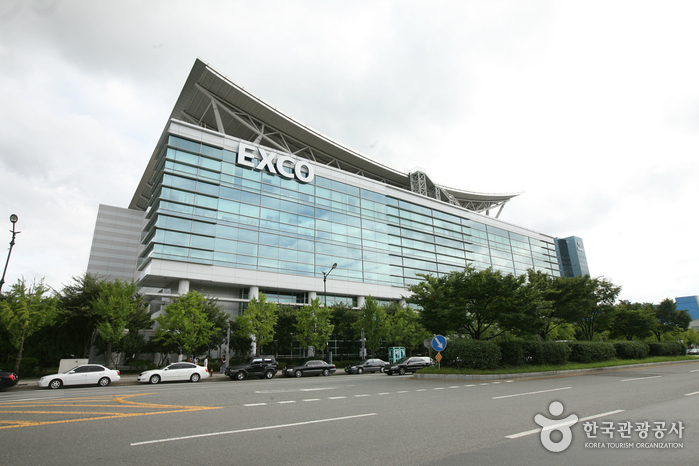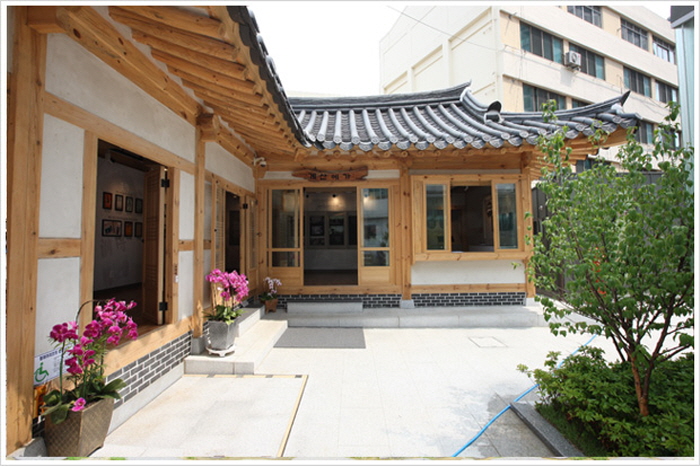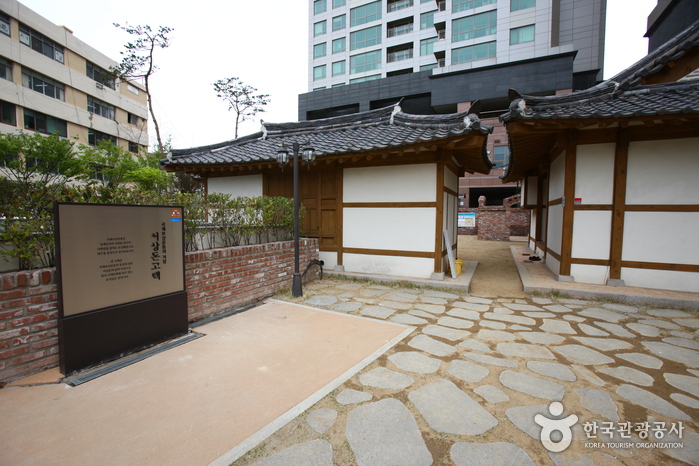Louis Vuitton - Hyundai Daegu Branch [Tax Refund Shop] (루이비통 현대대구)
3.5Km 2024-04-23
2077, Dalgubeol-daero, Jung-gu, Daegu
-
Daegu Jeil Church (대구제일교회)
3.5Km 2024-10-11
50, Gukchaebosang-ro 102-gil, Jung-gu, Daegu
+82-53-253-2615
Daegu Jeil Church is the oldest Protestant Church in Gyeongsangbuk-do Province. Initially established in 1898 over four tile-roofed houses, Daegu Jeil Church was rebuilt in 1933 with traditional and Western architectural designs. Subsequently, Deacon Lee Ju-Yeol dedicated a 33m bell tower in 1937, whlie the church underwent an interior renovation in 1969, and an expansion in 1981.
In conjuction with its physical development, which was at the forefront of the nation's architectural modernization, the church contributed largely to modernization and expansion of Christianity in the region as well as in Korea. In addition, by introducing modern medicine and education to the citizens of Daegu, the founders of Daegu Jeil Church stimulated social development in the region.
EXCO (Daegu Exhibition & Convention Center) (엑스코(EXCO))
3.5Km 2021-02-18
10, Exco-ro, Buk-gu, Daegu
+82-53-601-5000
EXCO is a leading exhibition and convention center in Daegu Metropolitan City, opened with the aim of promoting the local economy as well as the business, culture, and art sectors of Korea on an international scale. EXCO hosts over 1,000 events annually, ranging from international exhibitions and meetings to local business promotions. Opened in 2001, the center was expanded in 2020 to host larger international events.
Gyonam YMCA (교남YMCA)
3.5Km 2023-01-20
22, Namseong-ro, Jung-gu, Daegu
Established in December 1921, the Gyonam YMCA Hall served as a gateway to the modern movement in Daegu. During the Japanese colonial period, it was a meeting place and a base for Christian national movements such as the Product Promotion Movement, the Christian Rural Movement, and the Singanhoe Movement. This hall is a two-story red brick building built by the American missionary Blair in 1914. It retains the characteristics of the 1910s and '20s masonry construction, such as decorating the first and second floors with cornices and securing a square window with arches. In the early days, it was used as a place for students' education, evening classes, and lectures.
Daegu National Museum (국립대구박물관)
3.7Km 2023-01-05
321, Cheongho-ro, Suseong-gu, Daegu
+82-53-768-6051
Daegu National Museum was founded on December 7, 1994 to preserve and exhibit the unique cultural heritage of Daegu and Gyeongsangbuk-do. The museum is housed in a two-story brick building with one basement floor near Beomeo Park. The museum aims to promote the region's history and culture through educational programs.
Daegu Gyesan Cathedral (대구 계산동성당)
3.7Km 2024-07-31
10 Seoseong-ro, Jung-gu, Daegu
+82-53-254-2300
Daegu Gyesan Cathedral is one of Daegu's main churches, designed by Father Poisnel, who also designed Myeongdong Cathedral and imported stained glass for the windows directly from France. Being located in the city center, the cathedral is especially beautiful when seen at night.
House of Yi Sang-hwa (이상화 고택)
3.7Km 2023-01-06
6-1, Seoseong-ro, Jung-gu, Daegu
+82-53-256-3762
Yi Sang-hwa was a nationalist poet, who resisted the Japanese colonialism. This was his house from 1939 until his death in 1943. His house was neglected after he died, until a citizens' movement in 1999 to preserve the house urged the Military Mutual Aid Association to purchase it, and donate it to the City of Daegu on October 27, 2005. It has been restored and opened to the public, serving as the center for education of the poet's brave spirit and work.
Modern History Experience Hall Gyesanyega (근대문화체험관 계산예가)
3.7Km 2021-04-27
6-1, Seoseong-ro, Jung-gu, Daegu
+82-53-661-3323
Modern History Experience Hall Gyesanyega opened in 2012 is a public space designed for rest and education. Visitors can enjoy a moment of relaxation while touring Daegu Modern Culture Alley, as well as learn more about the history of the area through the video hall and about the houses featured along the way, such as House of Yi Sang-hwa and House of Seo Sang-don, at the hanok exhibition hall.
House of Seo Sang-don (서상돈 고택)
3.7Km 2021-07-01
6-1, Seoseong-ro, Jung-gu, Daegu
+82-53-256-3762
The house of entrepreneur and activist Seo Sang-don is located in the heart of Daegu. In 1907, in an effort to repay national debt and to gain independence from Japan, Seo launched the National Debt Repayment Movement as well as a nationwide campaign calling for people to quit smoking.
In celebration of Seo's leadership, the City of Daegu restored Seo's old house and opened it to the public. The City also built the National Debt Repayment Park and erected a statue of Seo in his honor.
March 1st Independence Movement Road (3·1만세운동길)
3.8Km 2023-01-20
Dongsan-dong, Jung-gu, Daegu
March 1st Independence Movement Road is a historical location where Daegu citizens gathered for the independence movement on March 8, 1919, and the midpoint of Daegu Modern Alley Tour Course 2. Passing Cheongna Hill Missionary's House and Jeil Church, you will come to a road with murals of the independence movement. The March 1st Independence Movement Road is a hilly road leading to Gyesan Cathedral. It is also called 90 Stairs because there are 90 steps. On the wall of the stairs, there is an augmented reality (AR) experience zone along with site photos from history. By scanning the QR code is a 3D video that vividly reproduces the independence movement, enabling a realistic experience of history. Follow the signs of the Daegu March 8th Independence Movement marching road to reach the main road and it will lead to the the 100th anniversary monument of the March 1st Movement and the starting point of the March 8 Movement. A guided alley tour is available for free with an online reservation on the official website.
![Louis Vuitton - Hyundai Daegu Branch [Tax Refund Shop] (루이비통 현대대구)](http://tong.visitkorea.or.kr/cms/resource/12/2888012_image2_1.jpg)




 English
English
 한국어
한국어 日本語
日本語 中文(简体)
中文(简体) Deutsch
Deutsch Français
Français Español
Español Русский
Русский